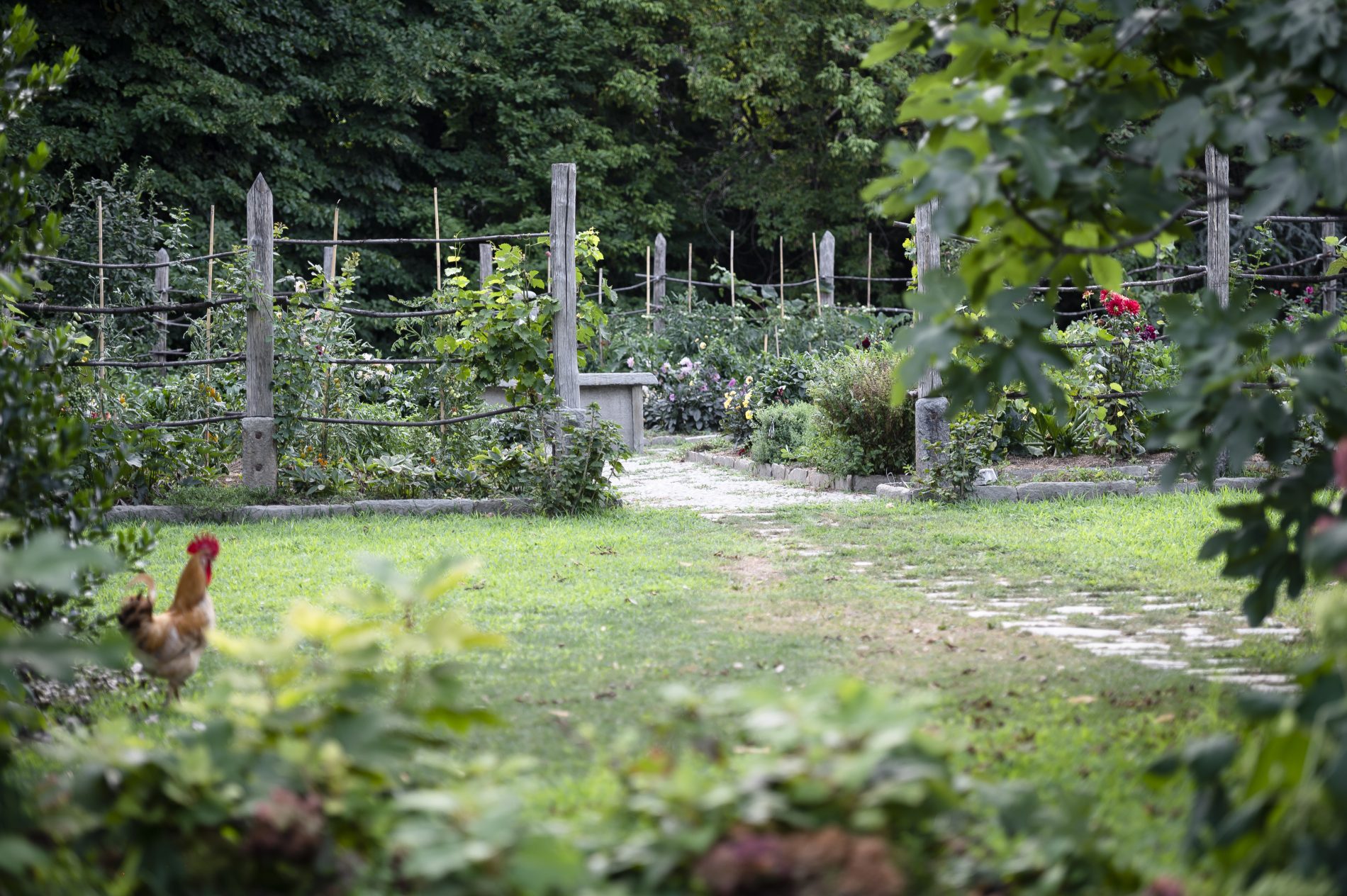The Noble Wing

Audio
Descrizione
Restoration work on this floor got underway in 2009. It chiefly involved the demolition of the curtain walls that had been installed by the religious congregation that had received the castle in bequest from Countess Sofia. The walls had served to “break up” the spacious halls of the wing into cramped rooms with bathrooms.
In restoring the original layout of the wing, two layers of fresco wall painting emerged. The older layer depicts pink and yellow architectural frames and volutes, reflecting the tastes and colors in vogue in the late eighteenth century. The later fresco, dating to the nineteenth century, instead features a banded decorative motif with neo-Gothic pointed arches, evoking, in a more simplified form, the brick arches found along the external facades of the castle.
Photographs from the time show that these rooms housed the private apartments of the Cacherano di Bricherasio family. The furnishings pictured, however, would appear to have been sold or stolen over the years, including the four-poster bed featuring ornate “bandera” embroidery.
We owe the prominence and spread of “bandera” embroidery to no less than Sofia Cacherano di Bricherasio. The embroidery style takes its name from the cloth it is stitched on, similar to fustian. The earliest mention of the fabric is found in a 1482 “Charter of the Fustian Craft” from the city of Chieri. The charter mentions a cloth initially made of hemp and later cotton, woven with a short nap in a twill or waffle pattern. Bleached white or unbleached, it was used to make the uniforms of militiamen and liveried servants, as well as ordinary underwear.
“Bandera” embroidery uses loosely-spun woolen yarn and typically features multi-colored decorative motifs, usually in the Rocaille and Rococo styles. Floral compositions are the most common motif, with tulips, peonies, roses, and carnations, but also oranges and lemons. Other motifs found include anthropomorphic figures, birds, architectural friezes, and garlands, framed by swirling ribbons in shaded colors.
Bandera embroidery rose to great prominence in Piedmont in the early seventeenth century, an era of strong French influence, when it was widely used, especially for furnishing textiles. It became popular again at the turn of the twentieth century, finding a new lease of life in 1906 when Countess Sofia Cacherano di Bricherasio opened the “Piedmontese School of Bandera Embroidery” for “poor young girls.” The school would exhibit its work that same year at the Milan International and at other leading national and international expos in Turin, Berlin and Paris between 1911 and 1913.
